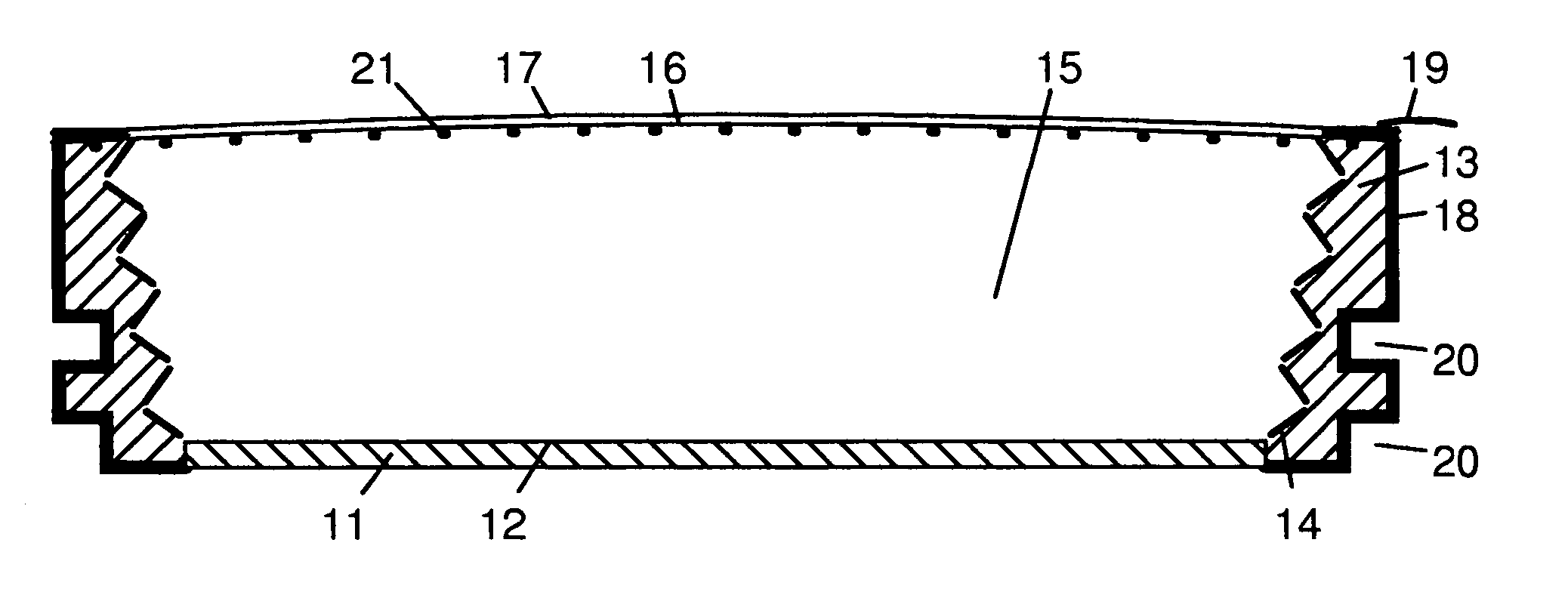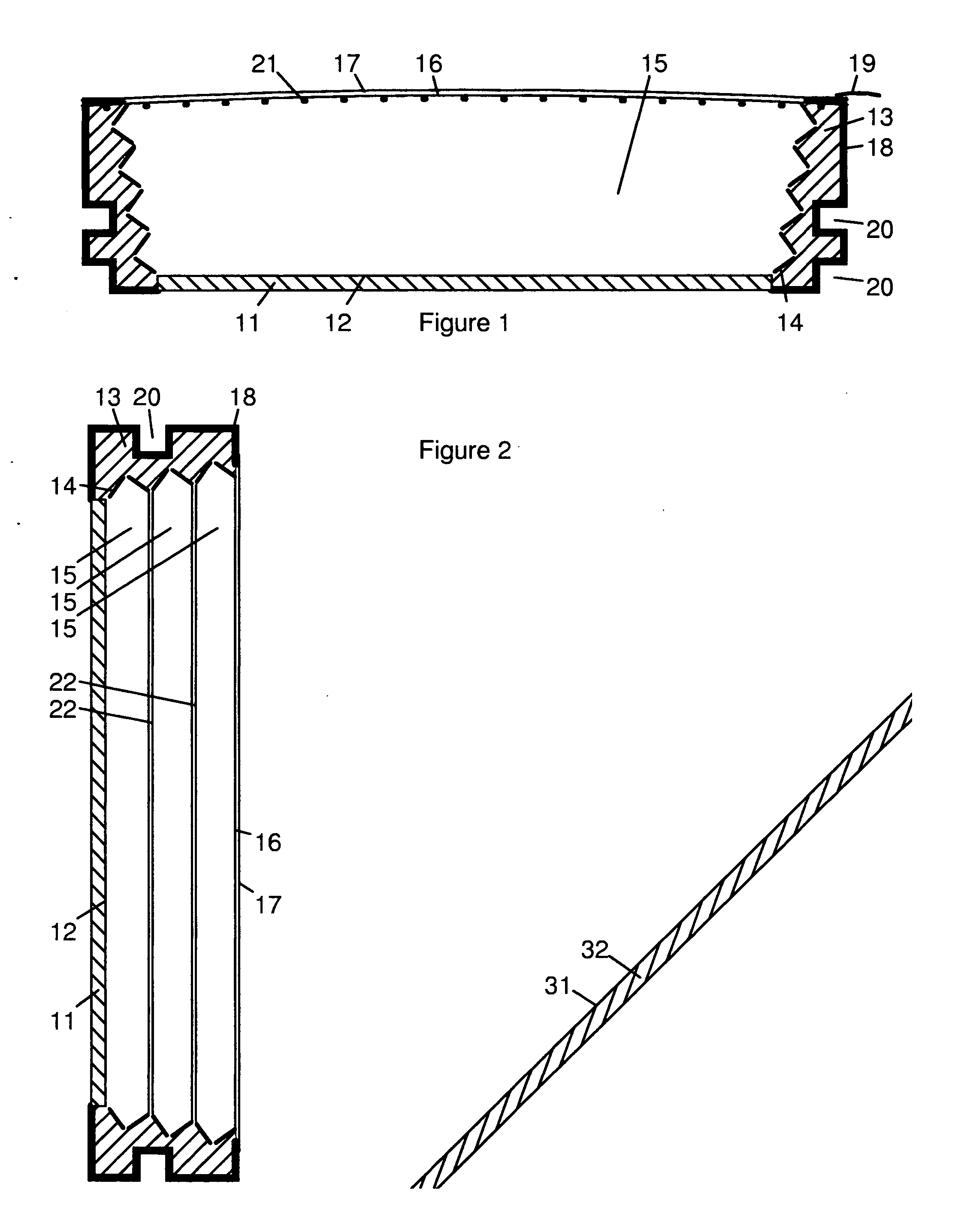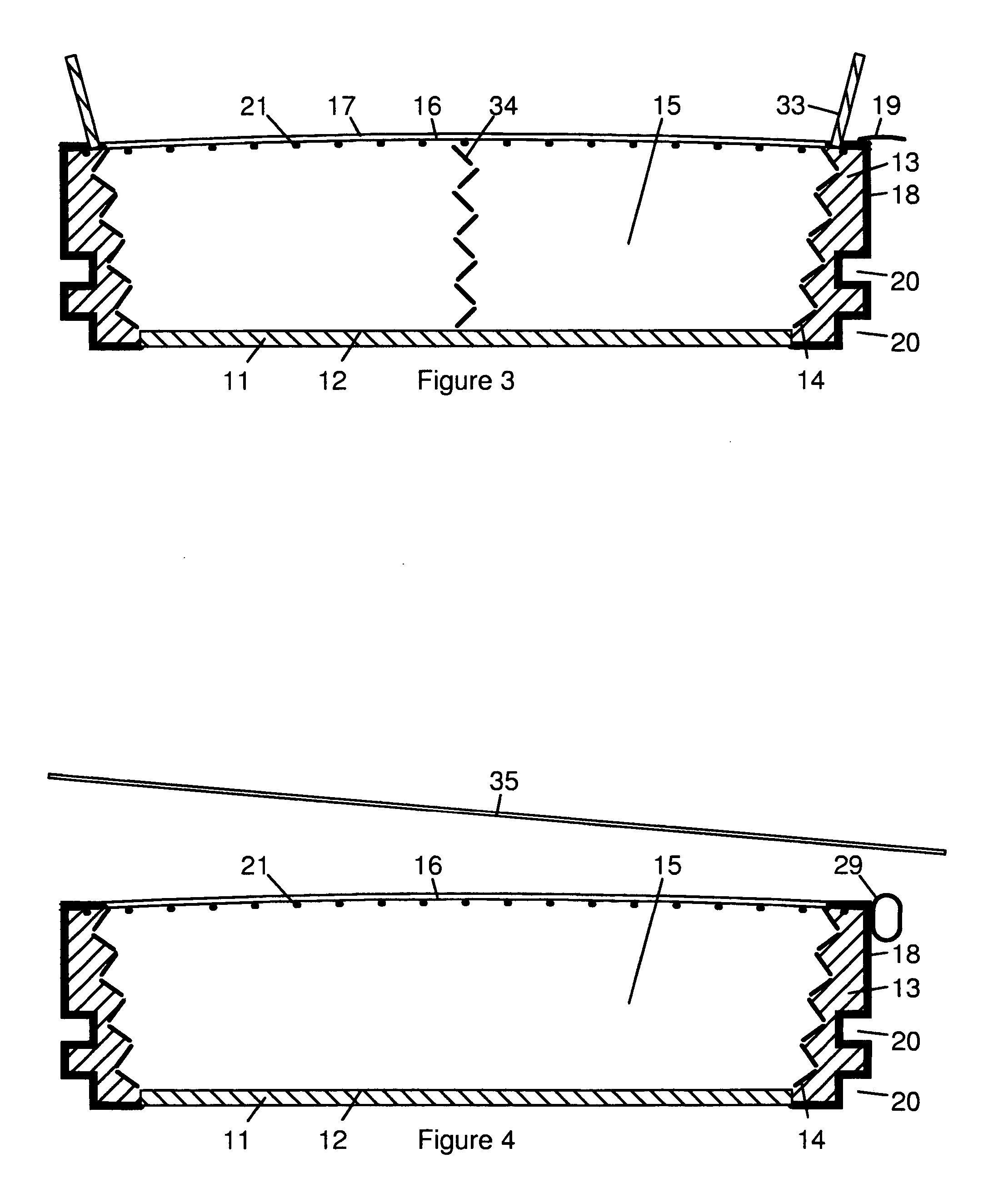Passive fluorescent cooling
a radiative cooling and fluorescent technology, applied in the field of passive radiative cooling, can solve the problems of reducing the cooling capacity of the black-body emitter severely, limiting the cooling available, and ineffective black-body cooling, and achieve the effect of exceeding the cooling power of the selective black-body emitter
- Summary
- Abstract
- Description
- Claims
- Application Information
AI Technical Summary
Benefits of technology
Problems solved by technology
Method used
Image
Examples
Embodiment Construction
[0031] A semiconductor with high carrier recombination rate, and having a bandgap energy between 0.100 eV and 0.119 eV, would absorb photons with energies larger than its bandgap and re-radiate most of their energy as photons having its bandgap energy.
[0032] In “HgCdTe infrared detectors”, OPTO-ELECTRONICS REVIEW 10(3), 159-174 (2002), P. Norton states “Since the bandgap of HgTe is negative, or inverted, the alloy can be grown to achieve arbitrarily small bandgaps.” This property makes HgCdTe and PbSnTe alloys well suited for the manufacture of thermal imaging detectors.
[0033] This article also reveals that with an anti-reflection coating, HgCdTe has a quantum efficiency greater than 90%. Because of the principle of detailed balance, a semiconductor which can absorb photons with 90% efficiency in equilibrium must also be able to emit photons efficiently. Therefore, HgCdTe can be a highly emissive phosphor.
[0034] With the ratio between CdTe and HgTe equal to 0.170±0.002, the wavel...
PUM
 Login to View More
Login to View More Abstract
Description
Claims
Application Information
 Login to View More
Login to View More - R&D
- Intellectual Property
- Life Sciences
- Materials
- Tech Scout
- Unparalleled Data Quality
- Higher Quality Content
- 60% Fewer Hallucinations
Browse by: Latest US Patents, China's latest patents, Technical Efficacy Thesaurus, Application Domain, Technology Topic, Popular Technical Reports.
© 2025 PatSnap. All rights reserved.Legal|Privacy policy|Modern Slavery Act Transparency Statement|Sitemap|About US| Contact US: help@patsnap.com



